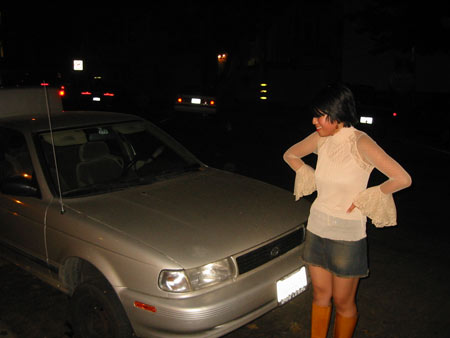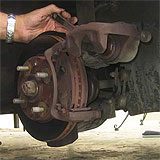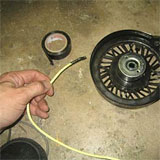Easy, Illustrated Instructions on How to Make a New Patio Umbrella Canopy
Page 1 | Page 2 | Page 3
We don't make roofs out of fabric. The sun, rain and wind is too harsh for fabric to withstand for more than a few years.
We do use fabric for outdoor furniture and patio covers. This fabric gets hammered by the weather and occasionally needs to be replaced.

In my case, a patio umbrella was our latest victim. The fabric was worn down til it was nearly transparent, then it ripped in a windstorm, and ripped again when I tried to repair the threadbare canopy.
This looked like a great project to renew my skills at sewing and geometry. I only did this once, but I submit this as the best "how to make a patio umbrella" guide on the internet. Although it isn't a complicated project, it is a large project, using five yards of fabric and about 80 feet of sewn seams.
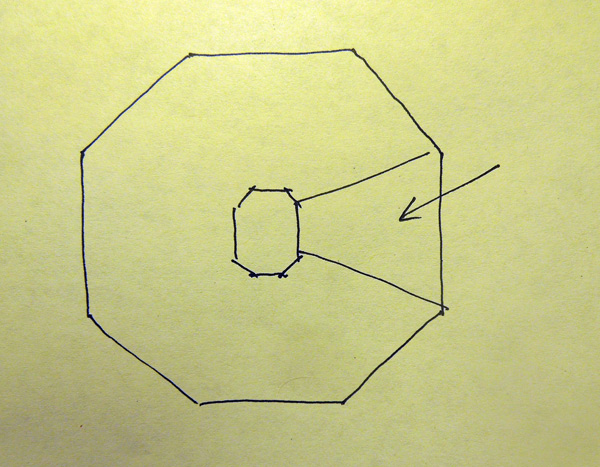
Patio umbrellas are usually constructed of either six or eight triangular panels connected along their sides. The top tip of each triangle is omitted, leaving a hole at the apex for air to escape. These triangles make up the main pieces of the project. You'll also need fabric pockets to hold the umbrella ribs, and a large circle to cover the top.
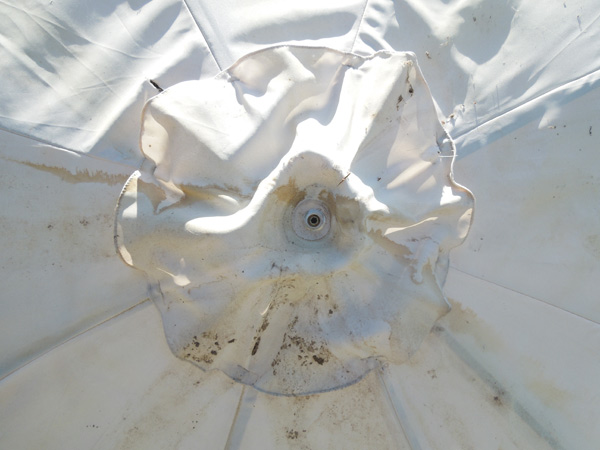
If you are still in possession of the tattered remains of your umbrella canopy, measure one of the unmolested triangles to figure out what size the new one should be.
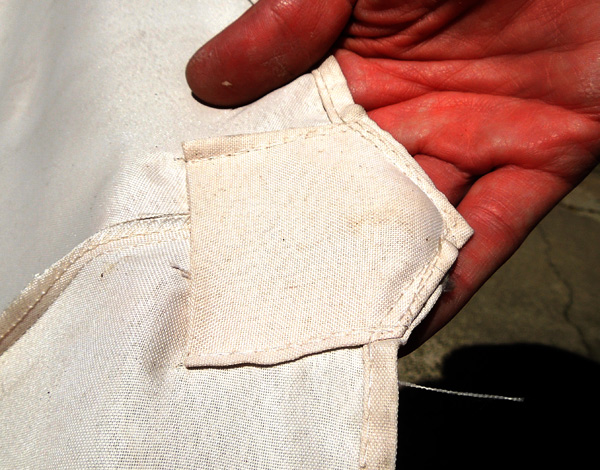
I measured the cloth panels on two 10-foot patio umbrellas, and found them to be significantly different. The wooden frames for these umbrellas are adjustable. As the frames are raised and lowered, the size required for a snug-fitting umbrella canopy changes. It is likely that these two canopies will still work on the same umbrella frame, despite their differences.
A highlight of this project should be the joy of choosing your own fabric. You could probably replace the umbrella canopy with one from Amazon.com for about $25, but they probably won't have the breadth of choices you can find at a fabric store.
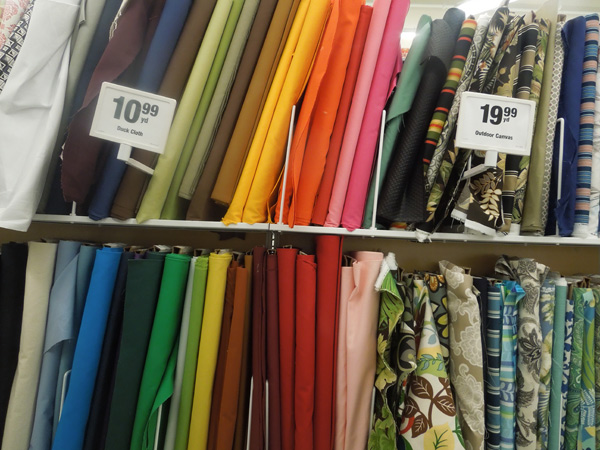
I chose red canvas duck cloth, which was $10.99 a yard. Also available was a "Solar" version of the fabric, which had a Ultraviolet coating for twice the price. As this was my first big sewing project, I decided to use the cheaper materials. Think of this as my beginner's umbrella. I was replacing a canopy made of thin polyester cloth. I would consider it a waste of my time to sew together an umbrella out of thin materials, but it's an option if you have more time than money.
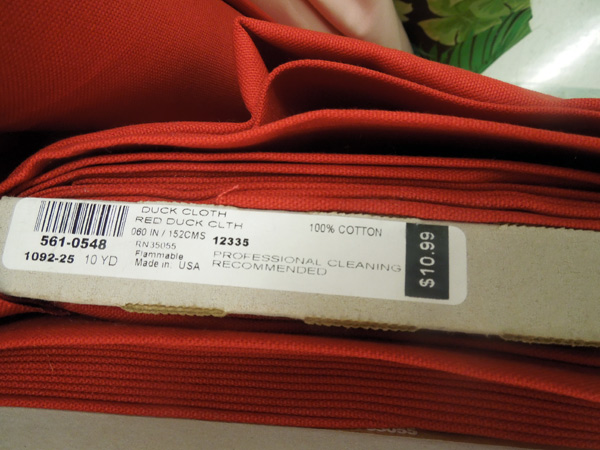
At the fabric store, I learned that the fabric I had chosen was 60" wide.
This is good news. If your sizes or angles aren't quite the same as the old umbrella, it will probably still work fine, because the frame adjusts.
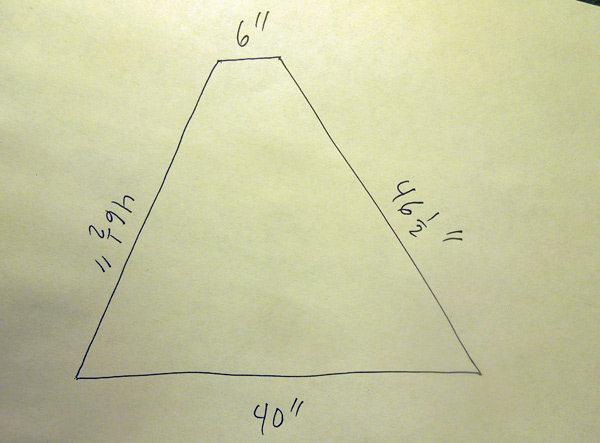
Considering your own measurements, be sure to add an extra quarter-inch or more to each edge for a seam allowance.
I considered the best way to get eight triangles out of a long rectangle of fabric.
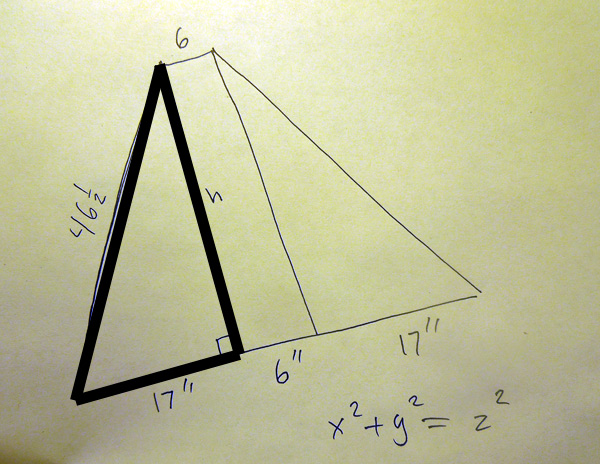
I forgot to measure the height of the triangles on the old umbrella, but I could calculate it using the information I did have, impressing exactly no one at the fabric store.
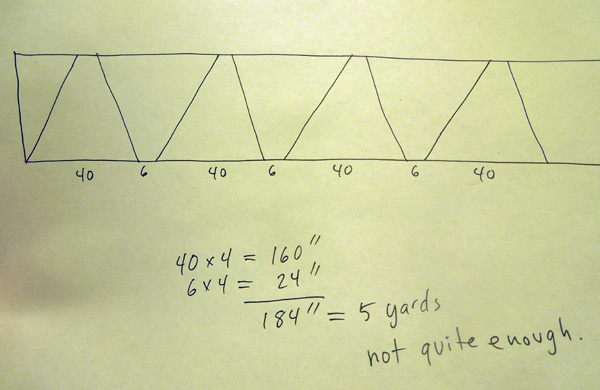
One way to use all this fabric was to alternate the long and short edges of the triangles along one edge, so that the triangles could share common edge borders. I only needed about 45" of width to accomplish this pattern, out of the 60" width.
Don't make the mistake of just summing the long and short edge length and multiplying by four (40"+ 6") x 4 = 184". I calculated them in that manner and ended up one triangle short when I got the patterns cut.
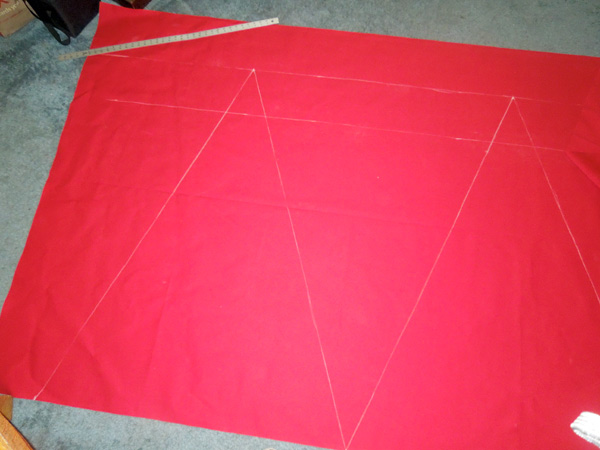
I laid the fabric out on the floor and drew panels and construction lines with white chalk. If your fabric has a pattern, you'll need to take more care about where the panel edges will meet when the umbrella is assembled.
Please Continue Reading Page Two of the Easy, Illustrated Instructions on How to Make a New Patio Umbrella Canopy
How to fix a fence | How to Make a Cheap, Heavy Concrete Base for a Patio Umbrella How not to build a patio cover | How to fix a gate | Disneyland Patio Umbrellas






